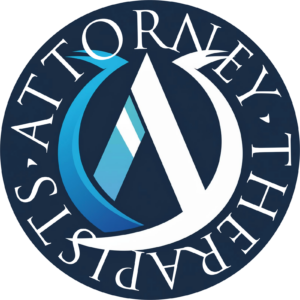Attorneys routinely operate under conditions that would be deemed acutely stressful in nearly any other profession: strict deadlines, adversarial environments, billable hour quotas, client crises, and existential stakes in litigation outcomes. Within this environment, anxiety is often normalized and even valorized. Yet distinguishing between situation-specific anxiety—a transient, event-driven phenomenon—and generalized anxiety disorder (GAD)—a persistent, pervasive psychological condition—is essential for effective intervention.
This article aims to (1) delineate the clinical and functional differences between these two types of anxiety as they appear in legal practice; (2) examine relevant psychotherapeutic and pharmacological treatments; and (3) provide clinicians and legal professionals with tools to accurately assess and address the specific contours of attorney anxiety.
Clinical Distinctions Between Situation-Specific and Generalized Anxiety
A. Situation-Specific Anxiety
Situation-specific anxiety is acute, circumscribed, and time-limited. It tends to arise in response to identifiable stressors such as court appearances, client confrontations, firm evaluations, or public speaking obligations. While it may be intense, it usually dissipates when the precipitating stressor is resolved. In attorneys, this might manifest as:
(1) Panic prior to oral arguments or trials
(2) Physiological arousal during performance reviews
(3) Acute worry surrounding client deadlines or negotiations
B. Generalized Anxiety Disorder (GAD)
GAD is characterized by excessive, uncontrollable worry across a wide range of domains—not limited to discrete events. According to DSM-5 criteria, this worry must be present more days than not for at least six months, accompanied by symptoms such as restlessness, fatigue, difficulty concentrating, irritability, muscle tension, and sleep disturbance.
In attorneys, GAD might present as:
(1) Chronic fear of underperformance, regardless of objective evidence
(2) Persistent worry about firm status, client relationships, and personal competence
(3) Rumination extending beyond professional contexts into family, health, or financial domains
The overlapping symptomatology can make differentiation challenging, particularly in a profession where high-functioning anxiety is both common and often rewarded.
Therapeutic Approaches to Anxiety in Attorneys
A. Cognitive-Behavioral Therapy (CBT)
1. For Situation-Specific Anxiety
CBT interventions for situation-specific anxiety typically employ exposure therapy, cognitive restructuring, and skills training. For example:
(1) An attorney fearful of public speaking may engage in graded exposure to increasingly difficult speaking scenarios.
(2) Cognitive restructuring would address distorted beliefs such as “If I stutter, I’ll ruin my career.”
(3) Performance enhancement strategies—like pre-argument visualization or tactical breathing—can buffer performance-specific anxiety.
2. For Generalized Anxiety
GAD treatment within CBT centers on challenging global, pervasive thinking errors. Key techniques include:
(1) Worry postponement, teaching attorneys to contain worrying to a scheduled “worry time.”
(2) Probability overestimation interventions to deconstruct catastrophizing tendencies.
(3) Problem-solving training, which helps convert passive worry into active resolution.
CBT’s empirical validation makes it a gold standard for both forms of anxiety, but its application must be nuanced to the attorney’s clinical presentation.
B. Mindfulness-Based Interventions (MBIs)
Mindfulness-Based Stress Reduction (MBSR) and Mindfulness-Based Cognitive Therapy (MBCT) cultivate non-judgmental awareness of thoughts and emotions.
- For situation-specific anxiety, moment-to-moment awareness can interrupt automatic physiological arousal.
- For GAD, mindfulness teaches attorneys to observe worry without fusing with it, reducing rumination and emotional reactivity.
Given attorneys’ training to intellectualize and problem-solve, MBIs provide a counterbalance—encouraging acceptance over control, and presence over prediction.
C. Pharmacological Treatment
1. Short-Term Pharmacological Support
For acute, situation-specific anxiety, short-acting benzodiazepines (e.g., lorazepam) or beta-blockers (e.g., propranolol) are sometimes prescribed.
(1) Beta-blockers are particularly effective for performance anxiety, blunting physical symptoms without cognitive dulling.
(2) Benzodiazepines, while effective, pose a risk of dependency and are unsuitable for regular use.
2. Long-Term Pharmacological Management
For GAD, first-line pharmacological treatment includes:
(1) Selective serotonin reuptake inhibitors (SSRIs) such as sertraline or escitalopram, which address both cognitive and somatic symptoms.
(2) Buspirone, an anti-anxiety medication with lower abuse potential than benzodiazepines, may be considered.
(3) Hydroxyzine, an antihistamine with anxiolytic properties, can be used situationally or adjunctively.
Medication decisions should be made with careful consideration of work demands, substance abuse history, and potential cognitive side effects, particularly given the profession’s reliance on sustained intellectual function.
Determining the Nature of the Anxiety: A Framework for Attorneys and Clinicians
A. Functional Assessment Questions
(1) Is the anxiety transient or pervasive?
(2) Does it resolve when the specific stressor ends?
(3) Does it impair functioning across unrelated domains?
(4) Is there a history of anxiety beyond legal contexts (e.g., childhood, early adulthood)?
B. Behavioral Indicators
(1) Situation-specific anxiety is more likely to be episodic and triggered by known events.
(2) Generalized anxiety manifests in restlessness, poor sleep, and pervasive worry even during ostensibly calm periods.
Attorneys are trained to suppress vulnerability and may underreport symptoms. Therefore, clinicians must probe beyond presenting complaints to explore underlying patterns.
Conclusion: Implications for Legal Culture and Clinical Practice
The high-intensity environment of legal practice requires attorneys to be emotionally agile and mentally sharp. Yet the stigma around mental health remains strong, and many attorneys mistake chronic anxiety for a normal byproduct of high achievement.
Understanding whether an attorney is suffering from situation-specific anxiety or a more diffuse anxiety disorder has significant implications for treatment. CBT and mindfulness-based modalities offer empirically grounded pathways tailored to the demands of legal work, while pharmacological options can offer targeted support when used judiciously.
Clinicians and law firms alike must foster spaces that support self-assessment and encourage seeking help—not as a sign of weakness, but as a strategy for sustained excellence and psychological resilience in a demanding profession.









